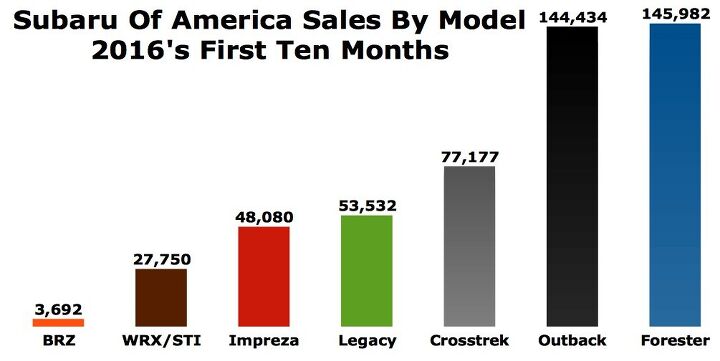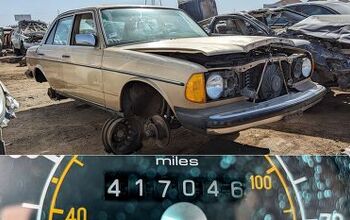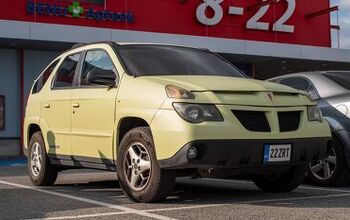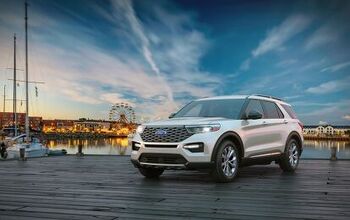Mainstream Religion: Subaru Of America Smashes All-Time Monthly Outback Sales Record In October
Is it still a cult following if only six, undeniably mainstream utility vehicles are more popular?
Honda, Toyota, Ford, Nissan, Chevrolet, Ford…
Subaru? While the U.S. auto industry dropped 6 percent in October 2016, losing nearly 90,000 sales compared with October 2015, the Subaru Outback soared to new heights.
If the Subaru Outback is the leader of a cult, as Dan Neil wrote in the Wall Street Journal earlier this fall, the cult is now big enough that we ought to call it a mainstream religion.
Subaru of America reported an all-time monthly record of 18,008 Outback sales in October 2016, smashing the nameplate’s one-month-old record by over a thousand units.
SUV/crossover sales across America grew just 2 percent in October. Yet in spite of the market’s slowdown, limited supply, and an abbreviated sales month, Outback volume jumped 22 percent, year-over-year.
Subaru’s rapid American rise is built on the steady growth of its high-riding models: the Outback, Forester, and Crosstrek. Outback sales have grown by two-thirds over the last five years. The Forester, Subaru’s best-selling model so far this year, is on track for a fourth consecutive record sales year. The Crosstrek now outsells the combined efforts of the car on which it’s based: Impreza, WRX, STI.
With those three models producing nearly three-quarters of Subaru’s U.S. volume, the brand has already produced 76,000 more sales through the first ten months of 2016 than in all of 2013. In fact, the Crosstrek, Forester, and Outback have already generated 31,000 more sales through the first ten months of 2016 than the whole Subaru brand produced in all of 2012.
Those are the kinds of numbers that are backed up by rapidly ascending market share figures. Subaru owned 3.9 percent of the U.S. new vehicle market in October — 3.5 percent year-to-date — after rising to 3.3 percent in 2015, 2.1 percent five years ago, and just 1.2 percent a decade ago.
Yet plans to improve Subaru’s U.S. production footprint have by no means fully taken hold. “We will add over 100,000 [units] to U.S. capacity for next year,” a Subaru spokesperson told TTAC earlier this fall. Subaru had more vehicles to sell this October than last — a 23-day supply heading into October 2016; only 15 days heading into October 2015, according to Automotive News. The industry as a whole currently has a two-month supply of new vehicles.
As a result of Subaru’s limited supply, incentives remain at an industry low. TrueCar says Subaru spent just $1,130 on incentives per vehicle in October 2016, up significantly from $695 per vehicle in October 2015, up modestly from $1,088 per vehicle in September of this year.
But Subaru’s incentive spend this October was still 68-percent lower than the industry average. TrueCar reports that Subaru’s incentive spending as a percentage of Subaru’s average transaction price was just 3.8 percent in October 2016, again the lowest in the industry, and 64 percent below the industry average. Subaru’s average transaction price jumped 6 percent, year-over-year, to $29,356 in October 2016, 12 percent below the industry average, a reflection of a lineup that lacks a three-row utility vehicle.
As for the Outback, specifically, Subaru’s current flagship was responsible for one-third of the brand’s total U.S. volume in October. Year-over-year, Outback sales have increased in nine consecutive months. The 18,008-unit total achieved in October was fully 6 percent better than the Outback’s previous record set just one month earlier (the previous record stood for eight months) and positioned the Outback seventh among SUVs/crossovers last month.
The Outback ranks 12th among utility vehicles — unless you consider it a wagon with a lot of ground clearance — so far this year.
Sounds mainstream to me.
[Images: Subaru]
Timothy Cain is the founder of GoodCarBadCar.net, which obsesses over the free and frequent publication of U.S. and Canadian auto sales figures. Follow on Twitter @goodcarbadcar and on Facebook.
More by Timothy Cain
Latest Car Reviews
Read moreLatest Product Reviews
Read moreRecent Comments
- ToolGuy 9 miles a day for 20 years. You didn't drive it, why should I? 😉
- Brian Uchida Laguna Seca, corkscrew, (drying track off in rental car prior to Superbike test session), at speed - turn 9 big Willow Springs racing a motorcycle,- at greater speed (but riding shotgun) - The Carrousel at Sears Point in a 1981 PA9 Osella 2 litre FIA racer with Eddie Lawson at the wheel! (apologies for not being brief!)
- Mister It wasn't helped any by the horrible fuel economy for what it was... something like 22mpg city, iirc.
- Lorenzo I shop for all-season tires that have good wet and dry pavement grip and use them year-round. Nothing works on black ice, and I stopped driving in snow long ago - I'll wait until the streets and highways are plowed, when all-seasons are good enough. After all, I don't live in Canada or deep in the snow zone.
- FormerFF I’m in Atlanta. The summers go on in April and come off in October. I have a Cayman that stays on summer tires year round and gets driven on winter days when the temperature gets above 45 F and it’s dry, which is usually at least once a week.



































Comments
Join the conversation
Our 2010 Forester hasn't exactly been a paragon of reliability but it's everyone's favorite vehicle to drive in the family and thus racks up the miles most quickly. There are numerous reasons. Maybe it's the dorky but cute styling and quirky but lovable traits like the hair-trigger throttle that makes it feel like an eager puppy just waiting to leap into your lap (or the bumper of the car in front of you). Or the throbbing drone of the boxer engine that my son really likes (??). After many years living with this car, I'm still impressed with its visibility and ultra tight turning circle, and it's prowess in harsh Michigan winters continues to amaze. In deep snow it will blow by any other 4X4 on the road save for a full-on Jeep Wrangler. So our Forester is like a best friend. Sure it's got its quirks and idiosyncrasies which you put up with, but it has charm and personality in spades. In a world where almost all mainstream cars have been homogenized and genericized to the point of being anonymous transportation appliances, a car with real personality is really refreshing.
My GF just bought a 2017 Forester. It is a base model with a 6-speed manual and we took a long trip with it this weekend. She bought it last week after her Audi A4 with 80k miles suddenly needed a new turbo and intercooler along with the regular maintenance and tires. The Subie dealer also owns the Audi dealer and offered her a really solid trade-in value as is. The only real complaint about it was that the iPhone integration for Pandora and streaming audio was a bit intermittent and took more fiddling than I've experienced in other new cars. That said, the car is really quiet, I guess they added a lot of noise insulation for the 2017. The manual transmission is nice and easy to shift even with only 400 miles on the car. We got 32 mpg on the freeway which I consider pretty good as we weren't driving particularly slowly, the car is new, and it's a pretty large vehicle with AWD. Most impressively, I haven't driven a car with that level of visibility in a long time. Even a lot of larger SUVs make you feel like you're driving from inside a bunker but the Forester has thin pillars and great sight-lines. It feels absolutely cavernous inside. It isn't a luxury car or a sports car, but it has a certain simplicity and honesty to the design that I find appealing and it seems a lot of others do as well.